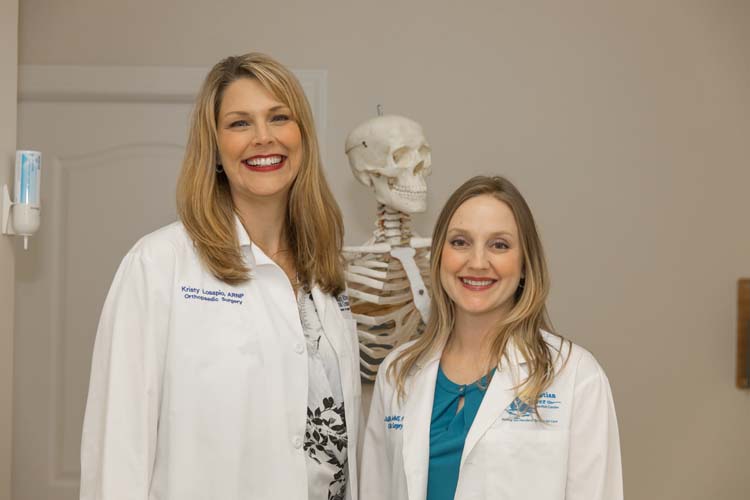Sticks and stones may break your bones, but osteoporosis can kill you.
Just ask certified physician assistant Julie Klucar and advanced registered nurse practitioner Kristy Losapio at the Coastal Fracture Prevention Center in Sebastian.
Right off the bat Losapio points out “75 percent of hip fractures occur in women,” but then adds, “men are at a higher risk of death following the hip fracture – 25 percent of men die in the first six months following a hip fracture.”
Klucar and Losapio are backed up in their claims by the American Orthopedic Association which bluntly states that “almost one quarter of seniors [men and women] who suffer a hip fracture will die within one year.”
That’s a lot of seniors.
The National Osteoporosis Foundation says that upwards of 10.3 million American adults have osteoporosis and that an incredible 43.3 million more have low bone mass that also can lead to broken bones.
Osteoporosis is a disease that “causes bones to become weak and brittle – so brittle that a fall or even mild stresses like bending over or coughing can cause a fracture,” according to the Mayo Clinic.
In fact, a huge percentage of the broken bones osteoporosis causes come from those “low trauma” events or when someone falls from a standing height while performing everyday activities.
The Surgeon General’s office states that by 2020, half of all Americans over the age of 50 will be at risk for fractures from osteoporosis.
So what are Klucar, Losapio and the Coastal Fracture Prevention Center doing to help older patients in Indian River County avoid fractures and live a longer, healthier, broken bone-free life?
Plenty.
This particular duo can rattle off a laundry list of things seniors can and should be doing to avoid life-changing and potentially life-threatening broken bones.
Since the disease is alarmingly under-diagnosed, having a DEXA or bone density test would be a logical first step. Losapio happily points out if your bone density is low, there are now new medications like Tymlos which, she says, “have been shown to actually build new and good quality bone.”
The next step might be taking a closer look at your diet. As Klucar points out, “you can get [all your needed] vitamins and minerals through a healthy diet, that’s optimal. I mean, I think that everybody would agree with that.”
She then adds that seniors need sunlight, too. “We’re afraid of the sun now, you know, but you’ve got to be outside for at least 15 minutes a day. And no sunscreen,” because even a low SPF 15 drastically reduces the vitamin D – an essential element for healthy bones – that your body takes in from the sun.
And then there’s balance. As we age and become at less active than we used to be, we may lose our natural sense of balance.
“If you’re not demanding balance, you’re not going to have balance,” Losapio says. “You have to make that a part of your daily routines. Standing on one leg brushing your teeth, I mean, little things. Standing at your kitchen doing dishes. Tilting from one leg to another. You know, little things, that you can work in.”
And while they’ll never make it into a Victoria’s Secret catalog, there are even undergarments specifically designed to absorb the impact of a fall, especially in the hip area.
Although the National Library of Medicine at NIH found only “a marginally significant reduction in hip fracture risk,” for those while wearing this “impact wear” clothing, for someone with severe osteoporosis, any reduction in risk might well be worth considering.
Klucar and Losapio say they are eager to share their knowledge, expertise, tips and skills in what they call this “bone health emergency.”
The Coastal Fracture Prevention Center is located at 13000 U.S. 1 in Sebastian. The phone number is 772-584-BONE.

